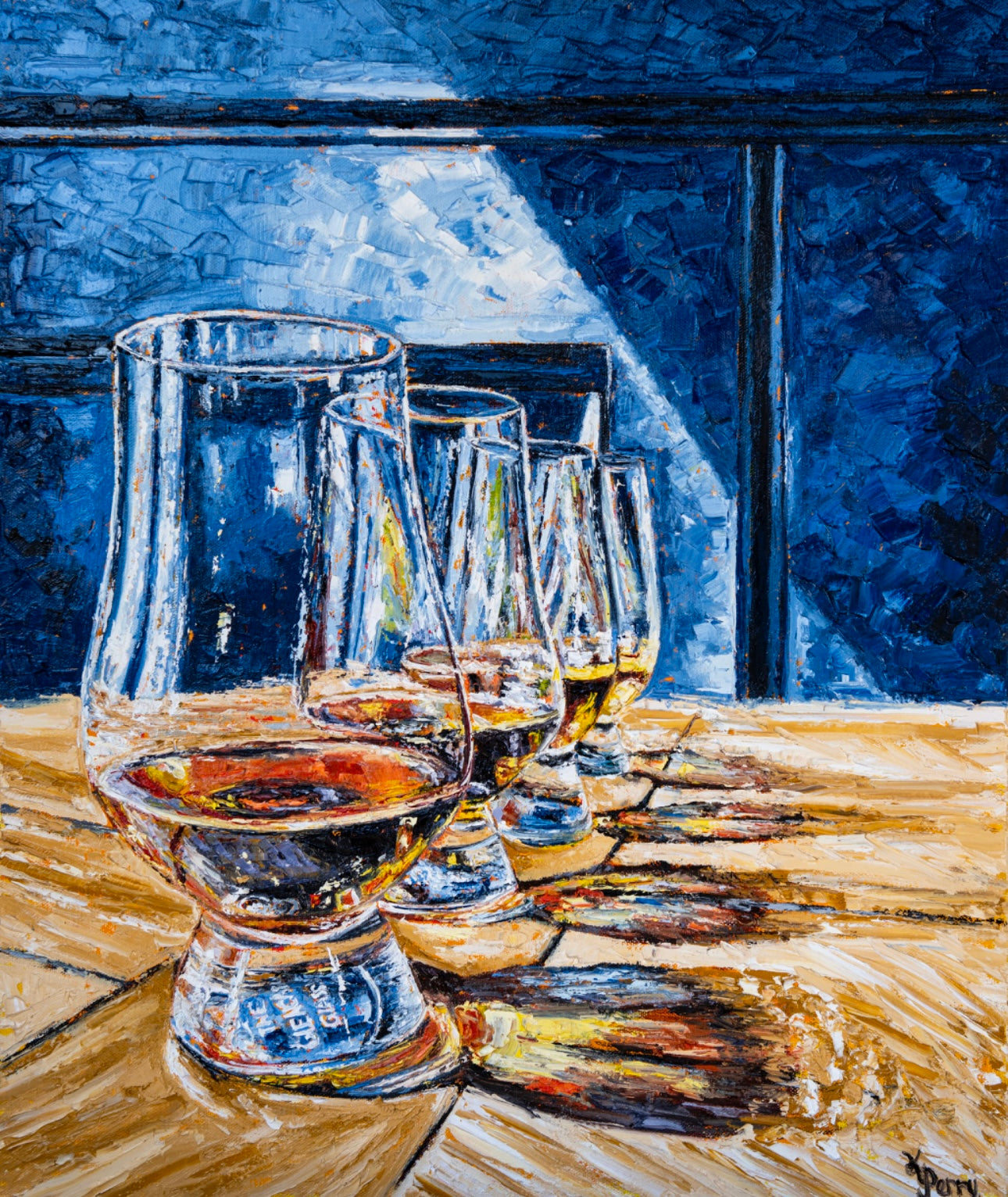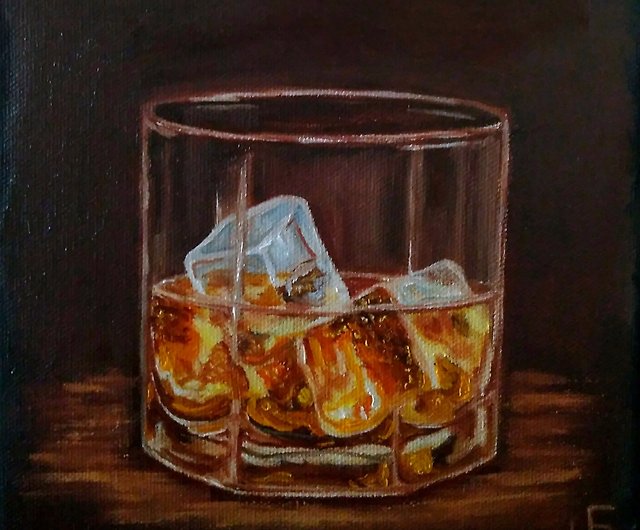The Importance of Whiskey Art in Celebrating Heritage and Workmanship in the Beverage Sector
The complex connection between whiskey art and the party of heritage and workmanship within the drink market can not be overstated. Via attentively created containers and tags, scotch brands envelop their historic roots and the artisanal abilities that specify their production methods. This imaginative measurement not only boosts market charm however also acts as a channel for cultural narration, promoting a deeper link between the consumer and the craft. As we explore the numerous aspects of this topic, fascinating concerns about the influence of contemporary trends on typical methods arise, triggering additional examination.
The Historical Roots of Whiskey
At the heart of bourbon's allure exists an abundant tapestry of historical origins that map back to ancient people. The beginnings of scotch can be connected to the purification practices of the Sumerians and Babylonians around 2000 BCE, where very early kinds of fermented grain beverages began to arise. However, it was in the Center Ages that the art of purification developed dramatically, particularly in Ireland and Scotland, causing the production of whiskey as we understand it today.
The term "scotch" itself acquires from the Gaelic word "uisce beatha," suggesting "water of life." This expression emphasizes the cultural significance of bourbon in Celtic societies, where it was frequently linked with rituals, celebrations, and common bonding. By the 15th century, purification came to be an identified craft within reclusive communities, paving the way for the establishment of legal distilleries.
As trade routes increased, whiskey's popularity grew, transcending regional boundaries and capturing the interest of connoisseurs worldwide. Whiskey Art. This historical journey reflects not only the workmanship behind bourbon manufacturing yet additionally its indispensable duty in social and social contexts, marking it as a considerable beverage throughout history
Artistic Expression in Branding
Bourbon branding stands as an engaging junction of creativity and commerce, where visual identity plays a crucial duty in forming customer understanding. The looks of scotch labels, product packaging, and advertising and marketing products show not only the brand name's tale but also its core worths and heritage. With artistic expression, distilleries convey a story that resonates with consumers, stimulating emotions and sparking links.
The usage of color, typography, and images in branding serves to set apart products in a saturated market. As an example, standard motifs might stimulate a sense of credibility and craftsmanship, while modern-day designs can indicate development and forward-thinking. This tactical imaginative direction improves brand name recognition and loyalty, permitting consumers to create an individual relationship with the scotch they select.
Moreover, creative expression in branding usually acts as an event of local heritage. Distilleries regularly incorporate regional signs or historic references into their styles, developing a local color that invites consumers to take part in a more comprehensive cultural experience. Eventually, the creativity behind bourbon branding not just boosts visual appeal but likewise enhances the total story of the brand name, cultivating a deeper appreciation for the craftsmanship and heritage embedded in each bottle.
Craftsmanship in Bottle Style
The creativity obvious in bourbon branding expands past aesthetic identification to incorporate the workmanship entailed in container layout. Each container offers as a vessel read what he said not just for the spirit within, yet additionally for the tale it outlines its origin, tradition, and high quality. The design procedure calls for careful interest to detail, as elements such as material, form, and closure add dramatically to the general understanding of the whiskey.
Workmanship in container style involves picking high-grade glass that can improve the whiskey's shade and clearness, while likewise providing a responsive experience for the consumer. The shape of the container should be both functional and cosmetically attractive, frequently mirroring the heritage of the brand. Many distilleries go with distinct forms or embossed logos that stimulate a sense of credibility and history.
Additionally, the label layout and typography play an important role in interacting the brand name's narrative. Bourbon Art. A well-crafted bottle not just mesmerizes the customer's eye but additionally reinforces the brand name's commitment to high quality and practice. By doing this, the workmanship of bottle style becomes a crucial aspect of the scotch experience, combining artistry with an extensive regard for heritage
Cultural Relevance of Whiskey Art
Celebrating practice and workmanship, the cultural relevance of bourbon art transcends simple aesthetics, intertwining with the social and historic narratives of the regions where it stems. Each bottle works as a canvas, showing the unique stories, mythology, and practices that have shaped regional whiskey-making methods. The detailed designs typically show the heritage of the distillers, including icons and motifs that resonate with the culture and values of their neighborhoods.

Furthermore, bourbon art plays an important role in public gatherings and parties, functioning as a substantial web link between individuals and their shared experiences. By valuing the virtuosity in bourbon product packaging, customers cultivate a much deeper understanding and regard for the craft, ultimately enriching their satisfaction of the beverage itself.
Modern Trends in Bourbon Presentation
In recent years, the discussion of bourbon has developed to show modern tastes and trends while still honoring standard workmanship - Bourbon Art. Distilleries are progressively concentrating on visual components that boost the overall drinking experience, bridging the space between heritage and modernity
Ingenious container layouts have actually arised, often incorporating sustainable materials and artistic labels that tell compelling stories. Numerous brands now work together with regional artists, infusing their items with special aesthetic expressions that reverberate with consumers. Furthermore, limited-edition releases are typically packaged in collectible containers, adding value and appeal for connoisseurs.

Conclusion
Finally, scotch art offers as an essential conduit for expressing the heritage and craftsmanship intrinsic in the drink sector. Via detailed branding, innovative bottle designs, and culturally significant artistic aspects, scotch brands efficiently honor their customs and link with consumers. This creative narrative not only raises the gratitude of scotch but also reinforces community identity and satisfaction amongst manufacturers. Eventually, scotch art plays a necessary function in preserving and celebrating the rich cultural tapestry of whiskey-making.


Craftsmanship in bottle layout includes selecting high-grade glass that can improve the whiskey's shade and clearness, while additionally giving a tactile experience for the consumer. In this method, the craftsmanship of bottle layout becomes a vital element of the scotch experience, combining artistry with a profound regard for heritage.
In conclusion, bourbon art serves as an essential channel for sharing the heritage and craftsmanship inherent in the beverage sector.